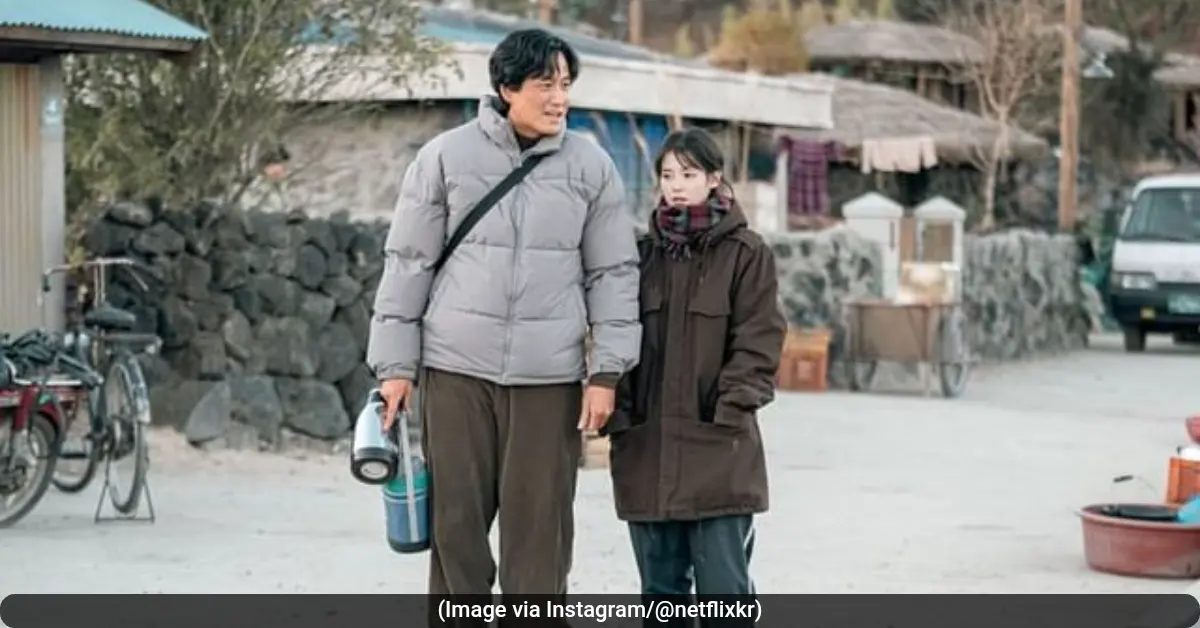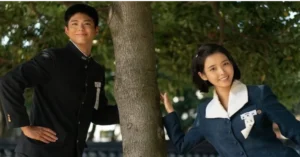The Netflix series When Life Gives You Tangerines has caught the attention of viewers across South Korea with its rich portrayal of tradition, family bonds, and everyday struggles. The show has spurred renewed interest in traditional dishes and inspired changes in long-held social customs. Viewers are now recreating the signature dish—rice mixed with peas—which tells the story of hardship and resilience during challenging economic times.
Cultural Impact
The series explores how traditional customs are challenged in modern society. It follows the life of Oh Ae-sun, a determined young woman from Jeju Island in the 1960s, and her lifelong companion Yang Gwan-sik. Their journey is set against the backdrop of a society slowly shifting away from rigid gender roles and customs.
The show presents moments that stir deep feelings about family traditions. In one notable scene, Ae-sun prepares a meal of rice mixed with peas—a dish historically consumed by families facing financial hardship. The meal, typically reserved for the male members of the household, is used to stretch limited resources. In a breaking of tradition, Gwan-sik is shown sharing his meal with his wife and daughter.
“The series resonates with many, reflecting both tradition and change,” said IU in a recent media interview.
This simple yet powerful scene has opened conversations about the role of family and tradition. The depiction of Gwan-sik sitting with his family, sharing food from his own bowl, is seen as a subtle act of defiance against centuries-old customs. The moment has been discussed widely on social media and among cultural critics who note the significance of such a change.
Culinary Influence
Food culture in South Korea is undergoing a transformation thanks to the show. The traditional dish of rice mixed with peas is now being recreated in households, food blogs, and even school cafeterias. The dish was once a necessity for poorer families who could not afford pure white rice. To add nutritional value and make meals last longer, families would mix rice with wheat, peas, and lentils.
Since the airing of When Life Gives You Tangerines, food enthusiasts have embraced this traditional recipe. Numerous posts on Instagram and other social platforms show step-by-step guides on preparing the dish. High school cafeterias have also joined the trend. According to reports from Korea Economic Daily, cafeterias have introduced a fixed meal set that includes rice with peas, fried croaker fish, steamed cabbage, squid soup, and kimchi.
This shift in culinary trends highlights how television can influence daily life. Traditional recipes that once held only historical value are now celebrated as part of modern culture. Convenience stores have even placed dialogue snippets from the series near their cabbage displays to remind customers of the show’s impact.
Dramatic Story
The narrative of When Life Gives You Tangerines intertwines personal struggles with larger social changes. Oh Ae-sun, portrayed by IU, is not only a young woman with aspirations of becoming a poet but also a symbol of resilience in the face of adversity. Her relationship with Yang Gwan-sik, acted by Park Bo-gum, represents the deep-seated connection between love and sacrifice.
The series does not shy away from depicting the pain of loss. Gwan-sik’s decision to spend his final days at home on Jeju Island, after being diagnosed with a terminal condition, is handled with quiet dignity. His farewell scene, marked by simple acts of care and a break from long-held traditions, has touched many viewers. The portrayal of his passing underscores the importance of family unity and respect in the midst of hardship.
Moon So-ri, who plays the older Ae-sun, brings out the transformation of a woman who turns to poetry as a form of healing and expression. Her journey, from enduring the loss of her beloved to finding solace in creativity, is a key element that many fans find relatable.
Historical Roots
The show draws heavily on South Korea’s rich cultural heritage. The title When Life Gives You Tangerines is a nod to Jeju Island’s famous citrus fruits. Tangerines on Jeju are more than just a crop; they represent the spirit of hard work and perseverance. The original Korean title, “Pokssak Sogatsuda,” translates to “you have worked hard” in the local dialect—a phrase that echoes the struggles and rewards of daily life.
Traditional symbols such as Ae-sun’s hairpins and the scenic backdrops of Jeju Island play a crucial role in setting the tone of the series. These elements remind viewers of the past while connecting them to contemporary challenges. The series also touches on the rapid industrial changes in Korea from the 1960s to today. The evolution of family dynamics and the shifting roles within households are presented through both small, everyday moments and larger, sweeping narratives.
The influence of When Life Gives You Tangerines extends beyond entertainment. It has sparked discussions about cultural preservation, the importance of traditional recipes, and the need to adapt customs in a changing world. Food, tradition, and family come together in a narrative that is both simple and profound, striking a chord with audiences across generations.
For more updates on When Life Gives You Tangerines, tune in to Vviptimes.















